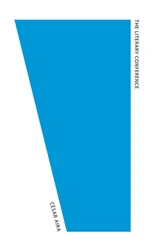Another condition of “flexibility”: the employer has no obligation for the minimum wage. This greatly facilitates the development of a business at the start, when an entrepreneur does not have enough funds to pay salaries, but he can motivate an employee, for example, a share of profits in the future.
Obviously, the “flexibility” that brings so much joy to employers must be compensated for by employees, moreover, it should be done energetically and otherwise the Danish state would have long fallen for the revolution.
Such compensation within the framework of Flexicurity is provided by the second component of the concept – Security (well-being, security).
The Danish state guarantees its citizens for the period of temporary unemployment payment of benefits in the amount of up to 90% of wages. In addition, the state undertakes to provide all the conditions for advanced training or complete retraining of workers.
The synergy of all components of Flexicurity in Denmark was the highest employment rate for women in the world (73%), which, combined with the employment rate of men (80%), created a situation where in almost all Danish families both spouses work full time.
Denmark’s spheres of influence
Recently more and more often doubts have been expressed about the ability of the Danish state to withstand the competitive struggle that has become aggravated to the limit in the era of globalization, and at the same time to preserve its unique system of social security.
In fact, how can you compete in the world market, say, with Chinese products, paying gigantic unemployment benefits?
I suppose the inconsistency of such doubts arises from the erroneous posing of the question itself. The fact is that Denmark is not going to compete with China at all, much less unleash price wars. Denmark has completely different priorities and trumps in the modern world system of labor distribution.
There are at least three such priorities:
– a unique niche for elite products;
– giants of national business, controlling entire sectors of the global economy;
– technological leadership in a number of medical and industrial equipment sectors.
Just as Italy sets global trends in the production of men’s clothing, luxury sports cars and industrial design, France in perfumery, haute couture and nuclear energy, Denmark stands as a benchmark in at least two directions: dairy products (the world’s best milk Ostedmejeri, Lurpak oil, which has enjoyed for 110 years the reputation of the most delicious natural butter of the “premium” category, etc.) and luxury home appliances (Bang &Olufsen).
In addition to elite niches, the competitiveness of the Danish business is ensured by the activity of a number of giant national enterprises:
– A.P. Moller-Maersk, the world’s largest shipping merchant;
– Carslberg Group, the world’s fifth largest brewing company;
– Lego, a manufacturer of children’s toys, deprived Ferrari of the title of “the most influential brand of the planet” in 2015;
– Ecco, a shoe company with a turnover of one and a half billion euros, whose products are sold in 14 thousand retail outlets in 88 countries of the world;
– Arla Foods, the sixth largest dairy concern in the world.
Leo Pharma, which specializes in dermatitis medications, and Novo Nordisk, which set the tone in the treatment of diabetes and related diseases, provide leading positions in medicine.
Finally, the final touch, designed to calm everyone who doubts the prospects of Denmark to endure the globalization. In the world market the country is represented by:
– Grundfos, one of the world’s largest manufacturers of industrial pumps;
– Danfoss, one of the world’s largest manufacturers of equipment for automatic control, hydraulic and compressor equipment, as well as thermal control systems; MAN Diesel & Turbo, the world’s leading developer and manufacturer of diesel engines used on ships and onshore installations;
– Rockwool, one of the world’s largest producers of environmentally friendly refractory, waterproof, vibration and noise absorbing insulation materials based on mineral water.
THE ISSUES OF SOCIAL POLICY IN DENMARK AGAINST A BACKGROUND OF ECONOMIC SUCCESS
Adrian Dragin,3 rdyear student of the faculty of International relations and geopolitics, Institute of World Civilizations, Moscow
Abstract: This article analyses economic problems in the sector of social policy in Denmark and actions to resolve these problems. One of the methods for solving these problems can be the entry of Denmark into the eurozone. The result of such actions will reflect in the empowerment of the national bank of Denmark to resolve the internal financial problems. Thus, it will give a rise to even greater economic stability of the state and will facilitate trade relations with the eurozone countries, which are Denmark’s main economic partners.
Keywords: Denmark, social security, Europe, eurozone
Many countries are discussing the ways to improve market mechanisms and social security policies. Some states prefer to talk about the ways to expand social security programs, while others say that this can lead to the deterioration of economic growth.
But the solution of this issue can be found by analyzing the successes in the economy of Denmark, Norway, the Netherlands and other countries. The Nordic countries manage a successful combination of social security with high incomes, stable economic growth and overall economic stability.
It should be noted that there are differences between the Scandinavian states. For example, social security spending is higher in Denmark, Netherlands, Norway and Sweden, and slightly lower in Iceland and Finland. A large level of taxation makes it possible to subsidize the state system of health care, education, pensions and other social services that is displayed in a low level of poverty and a small gap in income among the population.
The Danish economy seems to be very successful. The result of the impact of negative interest rates was: GDP per capita is higher than in 2007; The labor market is close to absolute employment rates; financial inequality is below average for Europe. However, there are some pitfalls here too. The Danish economy was affected by some potential threats in the years of ultra-low rates, and some of them are still in use today.
In the Nordic countries, there is a peculiar model of the state structure of the social democratic type, where the principle of universalism prevails in the provision of social services organized and financed by the state. This model of government was called “universal welfare” ( Wohlfahrtsgesellschaft ). This type of social policy was formed in a limited circle of countries, primarily Scandinavian. The necessary conditions for the formation and improvement of this policy were and still are the atmosphere of civil peace and the high political culture of the people. This model of social policy can function only with a high degree of socialization of national income. Here the principle is realized: from everyone – whenever possible, to each – according to needs. A distinctive feature of this system, compared with similar systems in other European countries, is the greater responsibility of society for solving social problems. In this regard, society plays a major role in regulating and fulfilling requirements aimed at ensuring satisfactory social security.
Denmark is a small country with a population of about 5.7 million people, staying between state members of the eurozone or states that have their own currency directly associated with the euro. The economy of the northern state is largely dependent on the eurozone: Germany acquires 17% of Danish export goods; France, Italy and the Netherlands are the main importers. The persistence of a stable relationship between the Danish krone and euro is an essential thing to the economy and the export sector of this state. The National Bank of Denmark must implement decisions aimed at euro rather than internal factors, which can provoke imbalances.
Читать дальше












